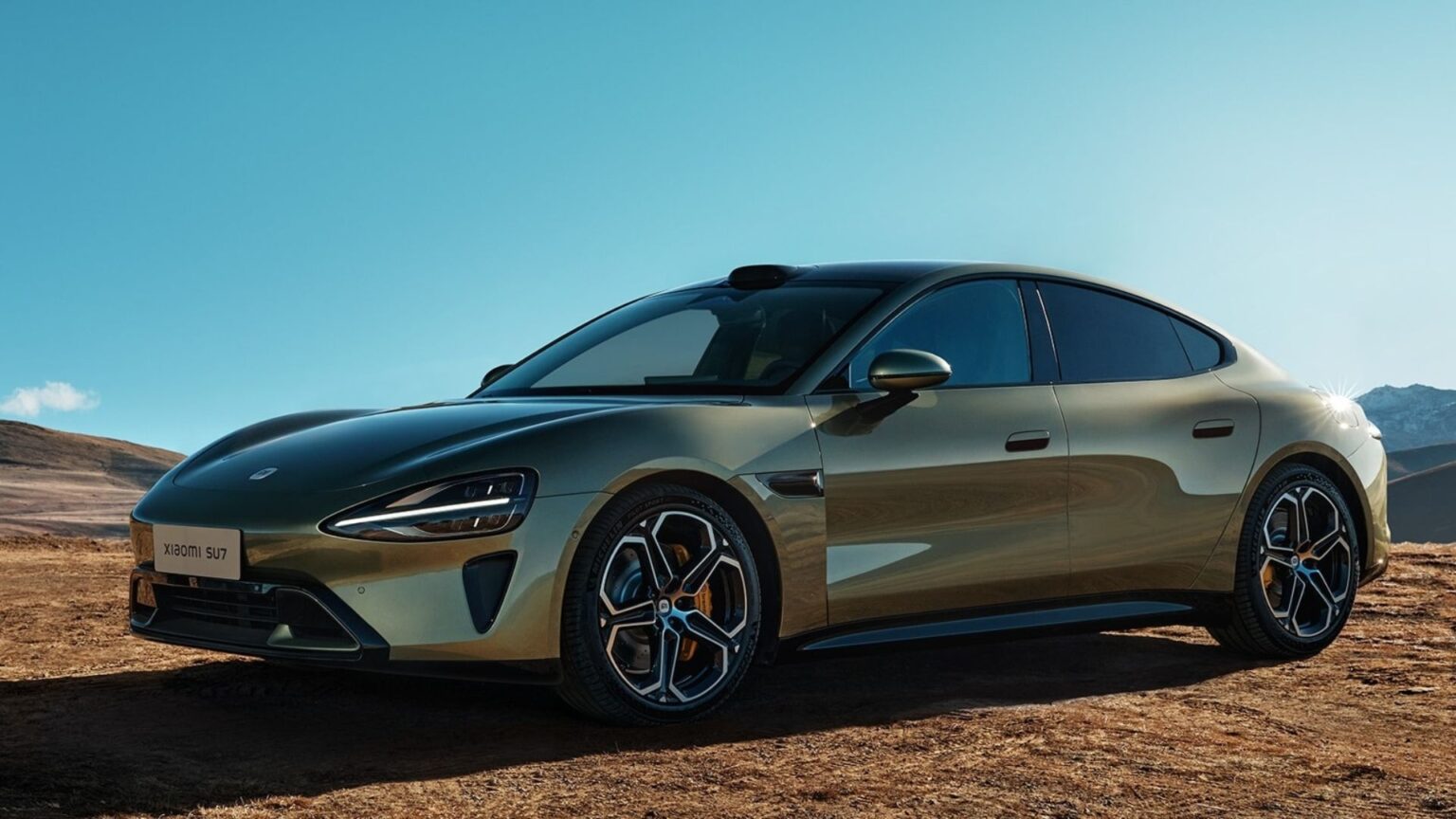If it took you a few minutes to stare at the top shot closely in an attempt to figure out if what you were looking at was a variant of the Porsche Taycan, that’s precisely what Chinese upstart automaker Xiaomi wants you to think. No, the SU7 takes nothing from the Taycan, except perhaps its silhouette, bulging wheel arches, and doors.
OK, so maybe it’s sort of copying Porsche’s electric sports sedan. But, what’s important to underline about this car is that not only did it mark Xiaomi’s first real stab at building cars after making a name for itself in the electronics sector, Xiaomi sold more of them in its home market in only nine months than Mazda sold CX-5s in the U.S. last year. And Xiaomi expects to double that amount in 2025.
Xiaomi Sold Twice The Amount Of SU7s It Had Originally Projected
As of December 27th, 2024, the rather attractive SU7 had sold at more than 130,000 examples. According to a recent statement from the carmaker on the Chinese social media platform Weibo, that’s more than double the original 60,000 cars Xiaomi had projected for this car. Barely a month after being on sale in March, the SU7 had already been shipped to 10,000 new owners. By mid-November, more than 100,000 EVs had been built.
This extremely strong demand is due to several factors. First, the way the car looks. Yes, it’s a copy of the Porsche Taycan, but it also takes styling cues from other premium and even exotic brands, such as McLaren in the front fascia and headlights, as well as Mercedes-Benz in the way the rear end slopes downwards and kicks back up through an integrated rear spoiler. In other words, this is a good-looking copy.
But, the SU7 is also a lot of EV for the price. For the equivalent of about 30,000 USD, you’re getting a sexy-looking electric sports sedan capable of sprinting from 0 to 60 MPH in 5.3 seconds, and able to drive up to 434 miles (as per China’s CLTC standards) on a single charge. Opt for the top-dog Max model, and you’re getting supercar-rivalling acceleration for about the same price as a Honda Pilot. Check out the SU7’s technical specifications below.
Xiaomi SU7 Technical Specifications
|
Xiaomi SU7 |
Xiaomi SU7 Pro |
Xiaomi SU7 Max |
|
|
Powertrain |
Single-Motor |
Single-Motor |
Dual-Motor |
|
Horsepower |
295 hp |
299 hp |
664 hp |
|
Torque |
295 lb-ft |
299 lb-ft |
664 lb-ft |
|
Transmission |
Single-Speed Automatic |
Single-Speed Automatic |
Single-Speed Automatic |
|
Driveline |
RWD |
RWD |
AWD |
|
Battery |
74-kWh Lithium-Ion Blade (supplied by BYD FinDreams) |
94-kWh Lithium-Ion Shenxing (supplied by CATL) |
101-kWh Lithium-Ion Qiling (supplied by CATL) |
|
Range (CLTC) |
434 Miles |
515 Miles |
497 Miles |
|
0-60 MPH |
5.3 Seconds |
5.7 Seconds |
2.8 Seconds |
|
Top Speed |
130 MPH |
130 MPH |
165 MPH |
|
MSRP |
215,900 Yuan (~$29,500) |
245,900 Yuan (~$33,600) |
299,900 Yuan (~$41,000) |
Xiaomi’s Momentum Has Given Birth To A Model Y Competitor Called The YU7
Such strong demand has allowed Xiaomi to begin bolstering its production lines back in July so it can build more SU7s, but also expand its lineup with the addition of a compact, performance electric SUV poised to take on the Tesla Model Y. Looking a bit like a cross between a Porsche Macan and a Taycan Sport Turismo, the equally attractive YU7 is scheduled to hit the Chinese market in late 2025 as a 2026 model.
This aggressive EV offensive will be sustained by what Xiaomi calls “phase two” of its production targets. From what we understand based on sources familiar with the matter, Xiaomi is in the process of expanding its Beijing facilities for increased output. According to the carmaker, that second phase should be completed by June, with projected end-of-year sales to reach 300,000 EVs. We’ll definitely keep following Xiaomi’s rapid evolution and will report back here with more details about this exciting new EV carmaker.
Read the full article here


